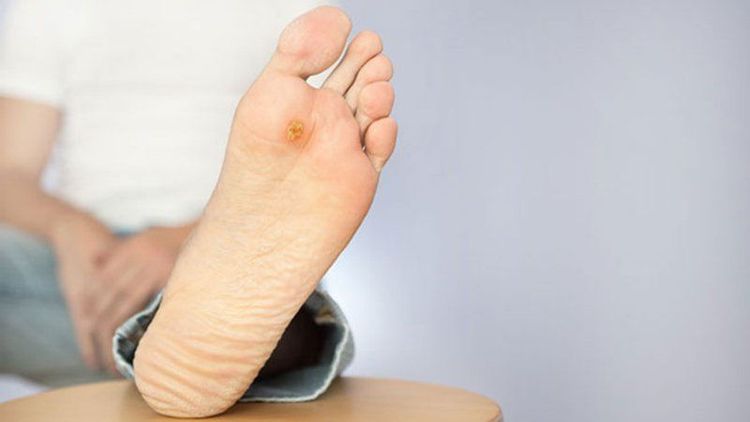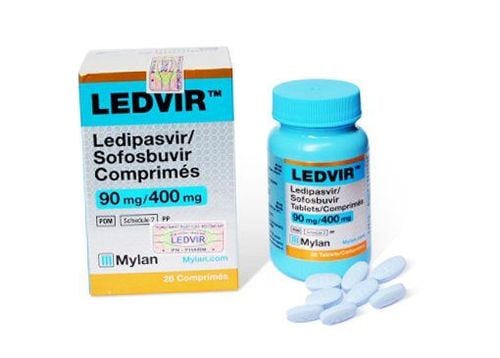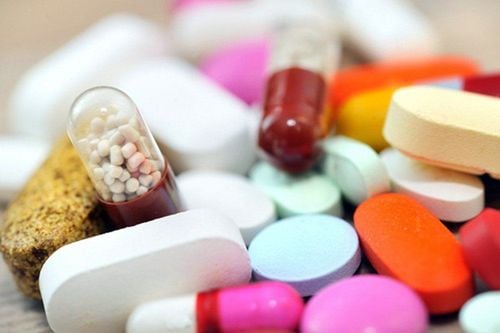This is an automatically translated article.
Becaplermin is used to treat certain foot ulcers in people with diabetes. Medicines are used along with foot care to help the ulcer heal completely.
1. What are the uses of Becaplermin?
Becaplermin topical is a recombinant homodimer B-isoform of human platelet-derived growth factor (rPDGF-BB) that enhances new granulation tissue formation, induces proliferation and differentiation of fibroblasts to promote promote wound healing; while promoting angiogenesis.Becaplermin is used as part of a holistic treatment to help heal certain ulcers of the feet, ankles, or legs in people with diabetes. Becaplermin must be used in conjunction with good ulcer care including: removal of dead tissue by a healthcare professional; use special shoes, walkers, crutches, or wheelchairs and treat any secondary infections.
2. Indications of the drug Becaplermin
Diabetic Ulcers : Adjunctive treatment of diabetic neuropathy ulcers of the lower extremities extending to subcutaneous tissue or beyond and with adequate blood supply. Limitations of use: Efficacy has not been demonstrated for pressure ulcers and venous stasis; Not evaluated for diabetic neuropathic ulcers that do not penetrate the dermis and subcutaneous tissue (stage I or II, International Association of Enteral Therapists [IAET] staging). ) or ischemic diabetic ulcer.

Thuốc Becaplermin là thuốc bôi giúp chữa lành một số vết loét chân tiểu đường
3. How to use Becaplermin
Becaplermin comes in the form of a gel applied to the skin. It is usually applied once a day to the sores. Do not apply more or less medicine than prescribed by your doctor. Using more gel than prescribed will not help the ulcer heal faster.
Your doctor will show you how to apply the medicine and know how much gel to apply. The amount of medicine you need depends on the size of the sore. You should see your doctor and have your sores checked every 1 to 2 weeks, and your doctor may ask you to apply less medicine as your sores heal and get smaller. Becaplermin topical should only be used on the skin, do not swallow the medicine or apply it to any part of the body other than the ulcer being treated.
To apply Becaplermin, follow these steps:
Wash hands thoroughly Gently rinse the wound with water. Wash your hands again Squeeze the amount of medicine your doctor has ordered you to use onto a clean, impervious surface such as wax paper. Do not touch the tip of the tube to wax paper, sores or any other surface. Close the tube tightly after use Use a clean cotton swab or tongue scraper or other applicator to apply the gel evenly to the surface of the ulcer in an even layer, about 0.2 cm thick. Soak a gauze pad with saline and put it on the wound. The dressing should only cover the wound, not the surrounding skin. Place a dry gauze pad over the sore. Wrap a soft gauze bandage over the pad and secure it with tape. Be careful not to let the tape stick to the skin After about 12 hours, remove the bandage and gauze, wash the ulcer gently with saline or water to remove any remaining gel. Use new gauze and bandages. Symptoms usually take several weeks to improve. Use this medication daily and tell your doctor right away if your leg ulcer is not smaller than a third of its size after 10 weeks, or if the ulcer has not healed completely after 20 weeks.
4. Notes when using becaplermin
Avoid putting pressure on your diabetic foot ulcer Avoid using other medicines on the areas you treat with becaplermin unless your doctor tells you to Avoid getting becaplermin topical in your eyes, mouth, or vagina. Besides topical medication, good foot care can help reduce the risk of foot ulcers from diabetic complications. Wash your feet daily and check for cuts, sores, or blisters. Keep toenails neat and trim them regularly. Choose shoes that fit your feet and always wear socks with them. Never share your medication with others and use it only as directed.
5. Becaplermin topical should be used with caution
Before using becaplermin topical:
Tell your doctor and pharmacist if you are allergic to becaplermin gel, parabens, any other medications, or any of the ingredients in becaplermin. Tell your doctor if you have a skin tumor or cancer in the area where you will apply the medicine. Tell your doctor if you have a history of poor blood flow to your legs or feet, or a history of cancer. If you are pregnant, plan to become pregnant or are breast-feeding while using topical medication, tell your doctor right away.

Người bệnh cần thận trọng khi sử dụng thuốc bôi becaplermin
6. Becaplermin side effects
All drugs can cause unwanted effects. However, many people experience no side effects or only mild side effects. Becaplermin gel may cause some harmful effects such as rash, burning sensation at or near the area where you applied the medicine.
Stop using this medicine and call your doctor at once if you have these signs: an increase in the size of the sores, or worsening of symptoms; intense itching; skin redness; either blistering or peeling of the skin.
7. What drugs will affect becaplermin topical?
Topical medicines are usually not affected by other medicines you take. However, drugs can still interact with each other. So keep a list of all the products you use (including prescription, over-the-counter, and herbal products) and share it with your doctor.
8. How to store drugs?
Store medicines in their containers and it is important to keep all medicines out of the reach of children. To protect young children from poisoning, always put medicine immediately in a safe location - high and far away, out of sight and reach of children.
Store the medicine in the refrigerator. Do not freeze. Close the cap tightly when not in use. Do not use topical medication if it has expired.
Please dial HOTLINE for more information or register for an appointment HERE. Download MyVinmec app to make appointments faster and to manage your bookings easily.
References: drugs.com, medlineplus.gov, webmd.com












